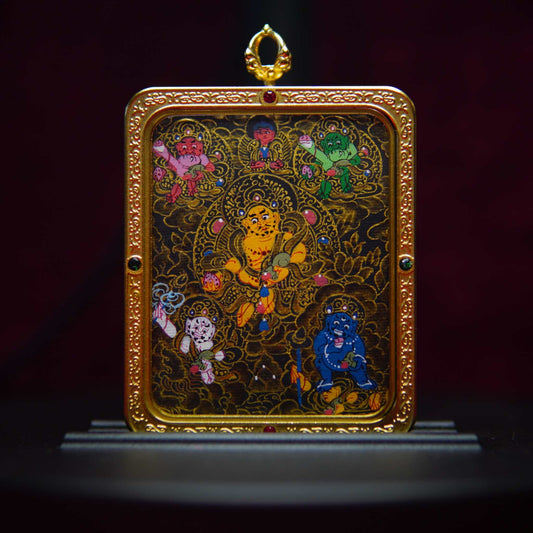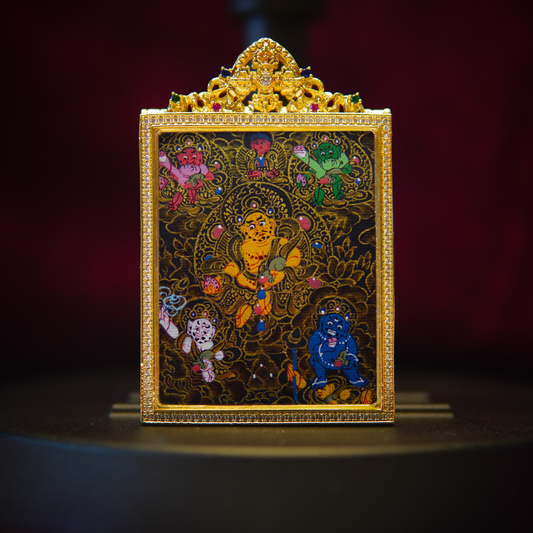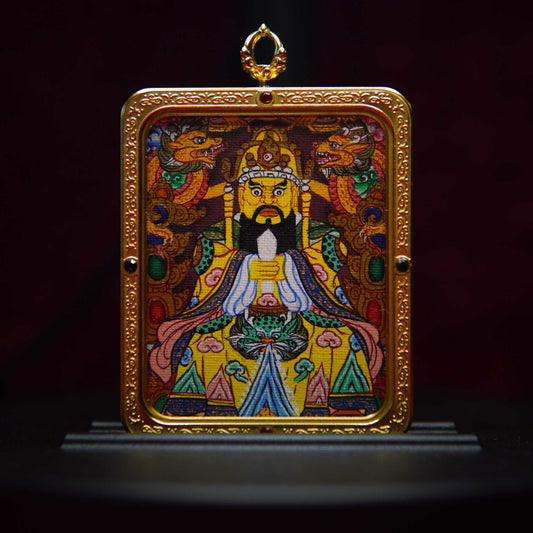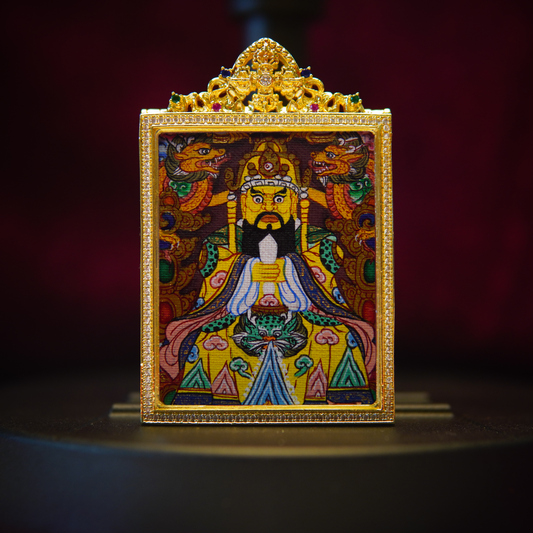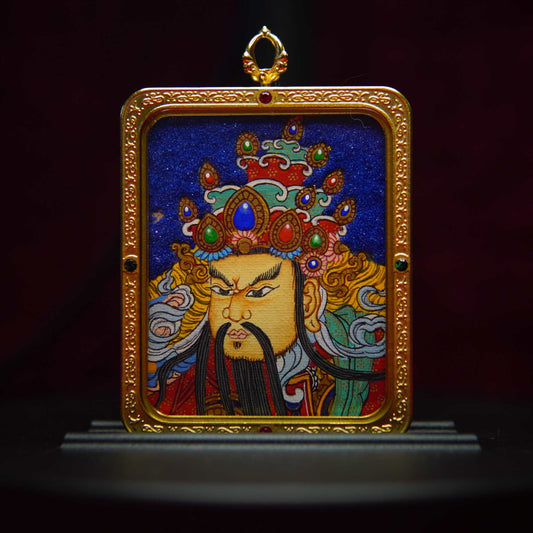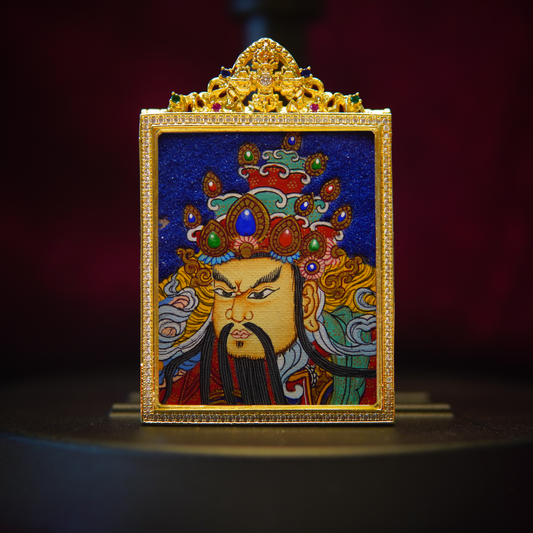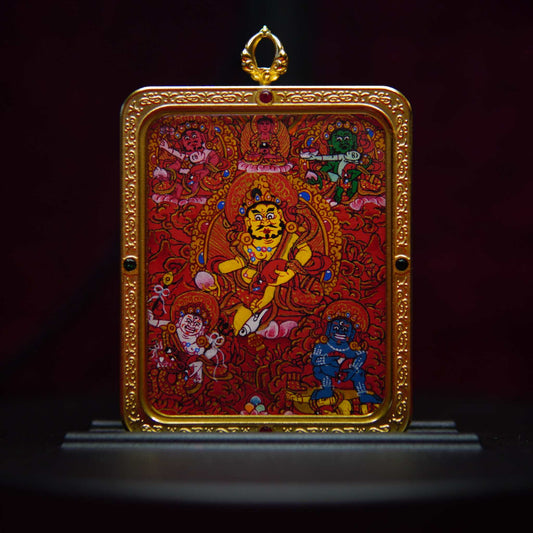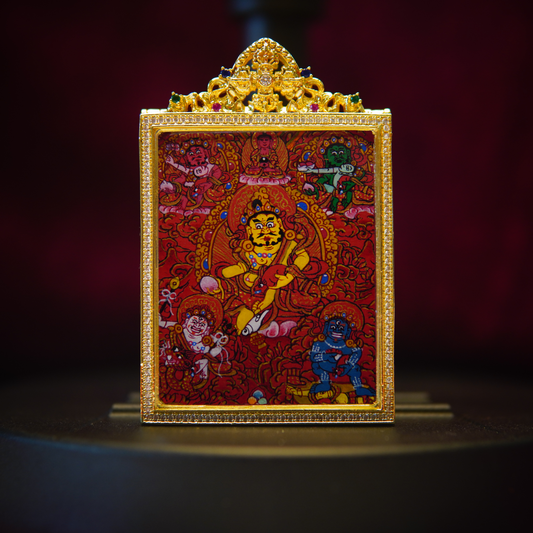What Does It Mean to Recite “Namo Amituofo”?
TapitaYou’ve probably heard it before.
Maybe from an old Chinese grandmother whispering it while cooking.
Maybe from a monk, deep in morning practice.
Maybe from a stranger online who ends every message with it:
But what does it really mean?
Is it a prayer? A greeting? A mantra?
And why do so many people—especially in Chinese and East Asian Buddhism—recite it every day, sometimes thousands of times?
Let’s take a quiet moment to understand it.
🔴 First: The Words Themselves
Namo Amituofo (南无阿弥陀佛) is the Chinese transliteration of Sanskrit:
Namo Amitābhāya Buddhāya
“I take refuge in Amitabha Buddha.”
Let’s break that down:
-
Namo (南无) – “Homage to” or “I deeply entrust myself to”
-
Amituo (阿弥陀) – Amitabha, meaning “Infinite Light”
-
Fo (佛) – Buddha
So, when someone says “Namo Amituofo,” they’re saying:
I entrust my life, my heart, my being—to the Buddha of Infinite Light.
It’s not a declaration of knowledge.
It’s a gesture of faith, humility, and longing.

🌄 Why Do People Recite It?
Different people chant for different reasons—and all are valid.
💠 For Peace of Mind
In times of stress, grief, or fear, this six-syllable chant becomes an anchor.
Soft repetition slows the breath, quiets the heart, and makes room for calm.
💠 For Spiritual Connection
Some chant to deepen their connection with Amitabha’s Pure Land—a realm of peace and clarity beyond suffering.
💠 For Rebirth
In Pure Land Buddhism, practitioners believe that sincere chanting can help one be reborn in Sukhavati, Amitabha’s realm, where enlightenment is easier to attain.
💠 For Others
Elderly Buddhists often chant “Namo Amituofo” when passing by animals, at funerals, or when hearing about disasters.
It’s a way to bless others, to share merit, to extend compassion even in silence.
🔊 It’s Not Just Repetition. It’s Remembrance.
Chanting isn’t about magic words. It’s about remembering:
-
That we are not alone
-
That compassion exists
-
That even when we fall short, there’s a light still willing to receive us
Some chant with mala beads, some silently in their mind, some in groups during temple ceremonies.
And some just whisper it under their breath while walking, like a heartbeat.
📿 Why Some Wear “Amituofo” Close to the Body
For many, Amitabha is more than a deity—he’s a quiet companion.
That’s why Thangka pendants or inscribed mantras are worn as reminders:
-
To stay calm when things get overwhelming
-
To remember kindness, especially when anger rises
-
To carry a sense of refuge, wherever you go
At Zendo Thangka, we offer hand-painted Amitabha Thangka pendants, sometimes with mini scrolls of the Namo Amituofo mantra sealed inside.
Not as fashion, but as a wearable prayer.
🌟 Final Thought
Some people pray with long words.
Others sit in silence.
And some… just whisper:
“Namo Amituofo.”
No noise. No performance.
Just a quiet returning—to light, to faith, to compassion.
If you've ever felt like the world was too much, this simple chant says:
There’s a place for you, and a light that has never turned away.

